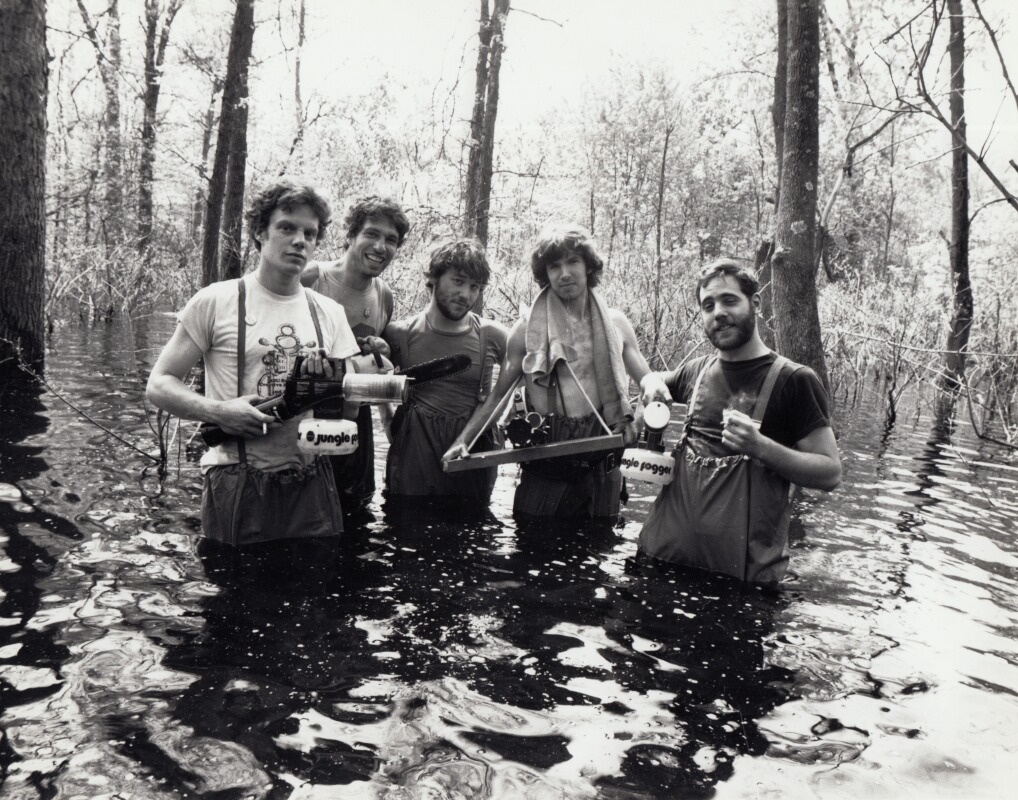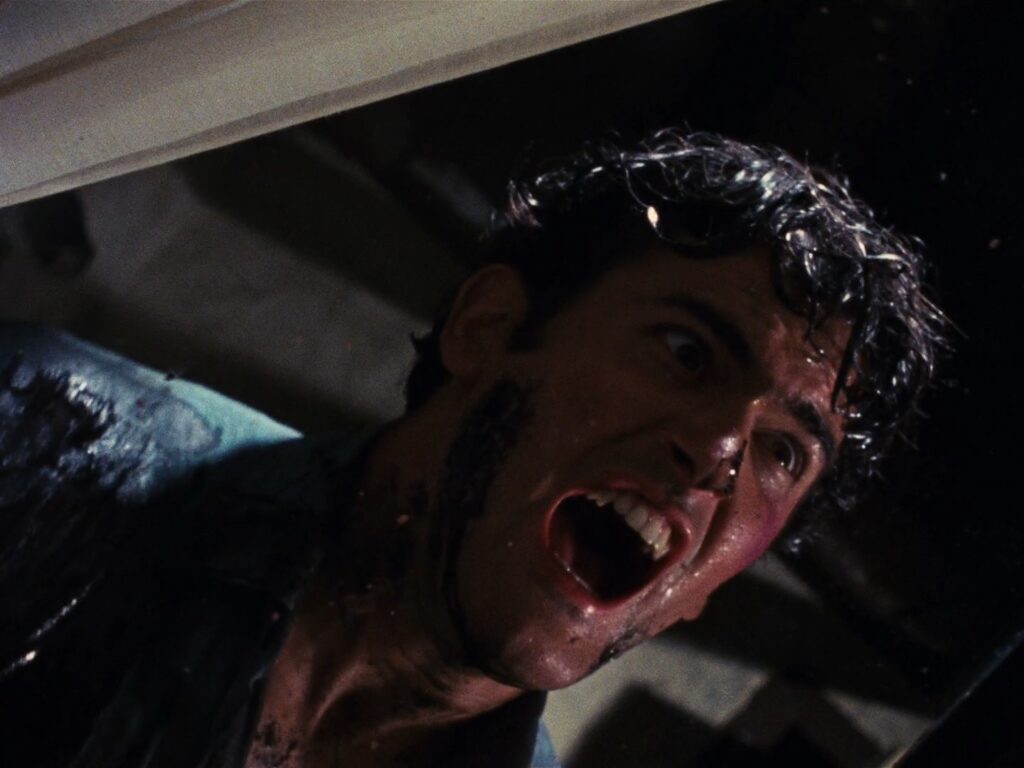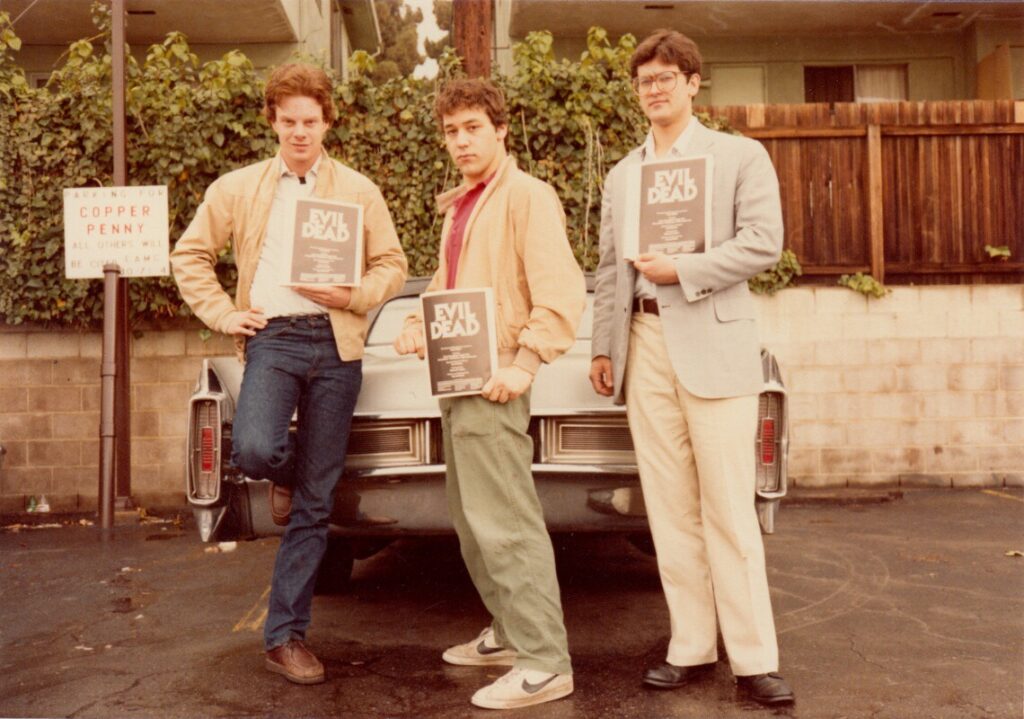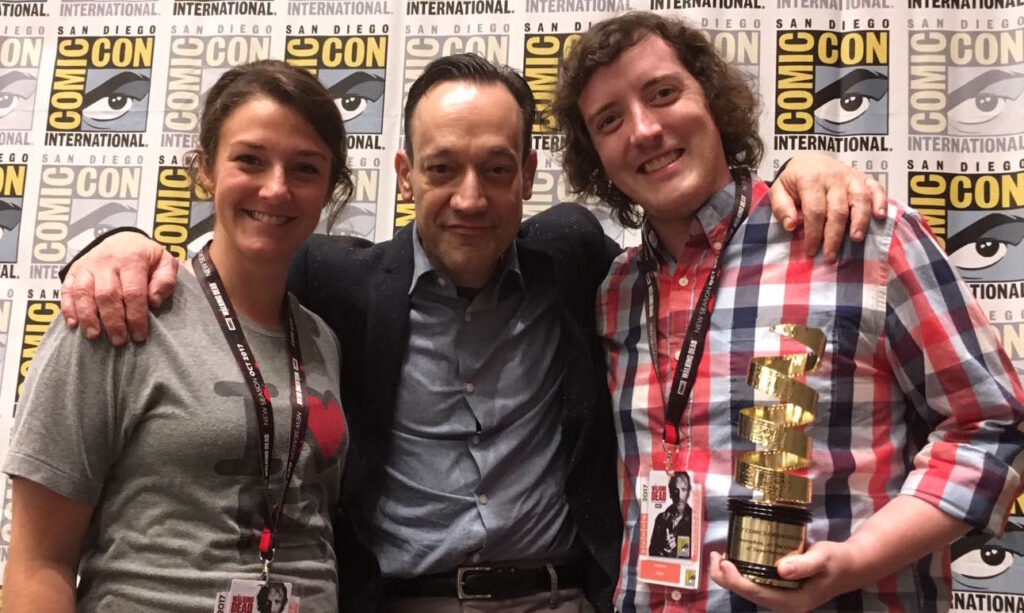|Andrew Neill|

When I was 22, I wanted to be Samuel Marshall Raimi. You probably know him as Sam Raimi, director of The Evil Dead. I was a young, eager kid just out of film school, and he was my hero.
His story seemed so close to my own, so attainable. In the fall of 1979, he and his buds Rob Tapert and Bruce Campbell wrangled up a small cast and a skeleton crew, descended upon a decaying cabin in the woods, and made one of the most successful independent films of all time.
And me? I had buds, too! Together we shared a filmmaking dream, just like Sam, Rob, and Bruce. Did we go on to make one of the most successful independent films of all time? Uh… Read on and find out…
The path of The Evil Dead from movie made by a group of buds from Detroit to endearing cult classic, which is still being screened at repertory theaters like the Trylon 40+ years later, is obfuscated by time and the gossamer mist of legend. A lot is yada-yada-yada-ed. To 22-year-old me, who wanted to do as my hero Sam did, the only “master plan” I could really suss out was this:
- Step 1: Make The Evil Dead.
- Step 2: …
- Step 3: Profit!
Everything in the middle there was entirely beyond me. But I was an ambitious young man with silver screen dreams. I wasn’t going to let pesky details get between me and cinematic glory!
Because I did know, and deeply resonated with, this unimpeachable fact: The Evil Dead fucking slaps. I know I don’t need to tell you this. You’re here reading a silly article about it. You know. The camera running full tilt through the woods as the eyes of an unseen evil “Force.” Deadite Shelly screaming with the force of a breach in the side of a Boeing airplane. Ash decapitating Linda with a shovel, only to be attacked by her headless, hemorrhaging corpse. Raimi and his buds accomplished so much with so little. The energy of the filmmaking is like a quadruple espresso on an empty stomach. It’s manic and dizzying and exactly the type of movie I wanted to make.

To this day when I watch The Evil Dead, I dream that I could be in the woods with Raimi and company and witness firsthand how they made it. The stories told in commentaries and interviews paint a wild picture. The prowling “Force” perspective was accomplished by mounting the camera in the middle of a board, which two guys would pick up on each end and run with it. (Cool!) When the Force crashes through the cabin window, they modified the rig into the “Ram-O-Cam,” which had a T shape. The long end stuck out just past the camera lens so that it would go through the window first. (Even cooler!) And the window was real glass, so when it shattered, very real, very sharp shards were strewn everywhere. (Uh…)
This fun (?) fact opens the door to the miserable reality of making The Evil Dead. The Michiganders chose Morristown, Tennessee as their principal shooting location in hopes of avoiding a Michigan winter, but then Tennessee plunged down to record lows. Actor Ellen Sandweiss, who plays Cheryl, was running through dark woods in a nightie in freezing temps. When they arrived at the cabin, the floors were covered in cow manure from animals freely roaming through it. If a crewmember had some free time, they were put on shovel duty. Long shooting hours and lack of sleep led to a general exhaustion across the team. It didn’t help that the crew had to take turns sleeping in the unheated cabin to prevent their gear from being stolen by local hill people.
The shoot was scheduled for six weeks but ballooned to twelve. As the weeks dragged on, cast and crew had to bail for other gigs and life reasons. By the time Raimi and his buds left Tennessee, they didn’t have a finished film. They shot the rest back in Michigan over the course of months, including the most visual effects-heavy moments.

It’s so easy to romanticize the making of the film because the results are incredible. 22-year-old me certainly looked past (or flat ignored) all the misery. I wanted to be Sam Raimi, so I was going to do as Sam Raimi did, i.e., do whatever it takes (i.e. stupid shit) to make the movie!
Once I needed to distress jeans for a costume, so I grabbed a knife and started scratching the hell out of my jeans… while I was wearing them. Still have the scar on my knee from that one.
For another project, my buds and I borrowed a $30,000 camera (yikes!) from a classmate in the film department with questionable judgment. We needed to get shots of our actor riding a bike in motion, so my bud dangled the camera out the back of an open tailgate of a moving pickup by hand, inches away from the pavement below. Did we have insurance? Of course not! He didn’t drop it, so who needs insurance?
Now let’s talk about blood. Fake blood. On The Evil Dead, they used the classic recipe of Karo syrup, red food coloring, a little blue food coloring (to create the right shade), and powdered coffee creamer (to make it more opaque). Campbell claims that one of his shirts dried with so much of this infernal concoction on it that when he took it off it cracked apart. 22-year-old me watched blood spray from the Deadites and pour out of electrical sockets and imagined giddily of being able to create such gnarly effects myself.
In reality, when you’re shooting in your bud’s garage or in your girlfriend’s dad’s bathroom or in the living room of a friend of a friend, they don’t want you to get blood on anything. Instead of slinging gobs of crimson corn syrup at your unholy will, you’re taking painstaking precautions, placing plastic tarps over anything the homeowner doesn’t want stained (i.e. everything) and praying after you call action that the blood lands where it’s supposed to and doesn’t get you immediately kicked out of your location. Blood effects are a huge pain to pull off, but that feeling when you watch the playback and it looks just as demented as you envisioned it—the best.
My buds and I were always focused on the cool parts of making a movie—step 1 of my “master plan” above. You know, the creative parts: hammering out a script, working with actors, planning shots, creating effects. We worked ourselves ragged with this stuff and completely overlooked something that helped Raimi, Tapert, and Campbell achieve their success—something that fell into the chasm of master plan step 2—a modicum of business sense.

When they set out to make what became The Evil Dead, Raimi and his buds wanted to make a movie they could sell. Horror movies performed the best through their target distribution model, which was—get ready for the most 1979 shit you’ve heard so far—the regional drive-in theater circuit. In retrospect, Raimi, Tapert, and Campbell don’t claim to have possessed much business savvy—they could hardly get through any interaction without breaking into Three Stooges routines—but they still made an effort to run the movie like a business.
They made a short film called Within the Woods, which they showed to investors as proof they could make a movie. They connected with a lawyer who was a family friend and lover of the arts. He drew up contracts and waived his considerable fee, which they had no money to afford, for ownership shares in the film. Once they had his contribution, others followed, including the guy who worked the film development desk at their local K Mart. Apparently the profit sharing was well planned, because even in a DVD commentary recorded in 2009, Raimi claims that profits from The Evil Dead were still being distributed according to the original contract, and their angel investors were very happy.
When The Evil Dead was finished in 1981—after being edited in New York City by Edna Ruth Paul and her assistant, who would become one of the greatest directors of all time and pride of Minnesota, Joel Coen—its reach went far beyond Michigan drive-ins. Raimi premiered the film in Detroit and got it in front of anyone even tangentially related to the entertainment industry. Luckily, producer Irvin Shapiro saw the film and recognized the larger potential of it. He threw in with the boys and took the film to the Cannes marketplace to sell its international rights. The movie wouldn’t get domestic distribution until 1983, and even then it didn’t really cement its cult status until it was released on VHS. It’s the kind of movie meant to be watched on a 19-inch television at 11:30 p.m. in your bud’s musty basement, while his parents think you’re actually watching Casper: A Spirited Beginning.
Cut back to 22-year-old me, who doesn’t know any of this shit. I think it’s hard enough to get a movie made, let alone screen it or—seriously, what are we even talking about—sell it.
To 22-year-old me the business side of filmmaking felt—and literally was for a kid in Minnesota—a thousand miles away. I dreamt of being a Hollywood director, but when I was actually making stuff, the most important parts that had real meaning to me were more tangible. I did it because I enjoyed making movies with my buds and putting them in front of people with the desperate hope that they would like them. We took part in local events here in Minneapolis like the 48 Hour Film Project and Z-Fest, which offered the extra awesome opportunity of showing your movie on a big screen with a packed crowd.
My buds and I never got past step 1 of the master plan. We never made a cult classic like The Evil Dead. However, we still had a blast making a bunch of short films and even one feature! Our work has screened all over the country as part of film festivals and fan conventions. We had a sci-fi comedy short screen at the TCL Chinese Theater in Los Angeles and a superhero short screen at the San Diego Comic-Con International Film Festival, where we won Best Comics-Oriented Film. One of the judges who awarded us? None other than younger brother to Sam, the ultimate Fake Shemp, and Henrietta from Evil Dead II: Ted Raimi.

I followed in the footsteps of Sam Raimi in myriad ways, both advisable and very, very not! I’ll end by saying, thank you, Sam Raimi. Your manic genius inspired this Midwestern kid to pick up a camera (not always a $30,000 one from uncannily trusting people), stir up some fake blood, lay down a tarp, and make a little movie magic. The reality of filmmaking can suck a lot of the time, but the thrill of pulling it off can be utterly euphoric, whether you’re watching playback with your buds on set or sitting with them in a theater, grinning at each other as the audience explodes with laughter.
Edited by Matthew Tchepikova-Treon

Absolutely LOVE the Evil Dead trilogy, and your article really brings back the feelings I also felt; the inspiration of watching some home-brewed mischief and thinking I might do the same.
Still working towards number 2 and 3 from your list 😉